The Last Emperor
8.8 /10 1 Votes
4/4 Roger Ebert 4.1/5 Amazon Genre Biography, Drama, History Duration | 7.8/10 IMDb 92% Rotten Tomatoes Country ChinaUnited KingdomItaly | |||||||||||||||||||||||||||||||||
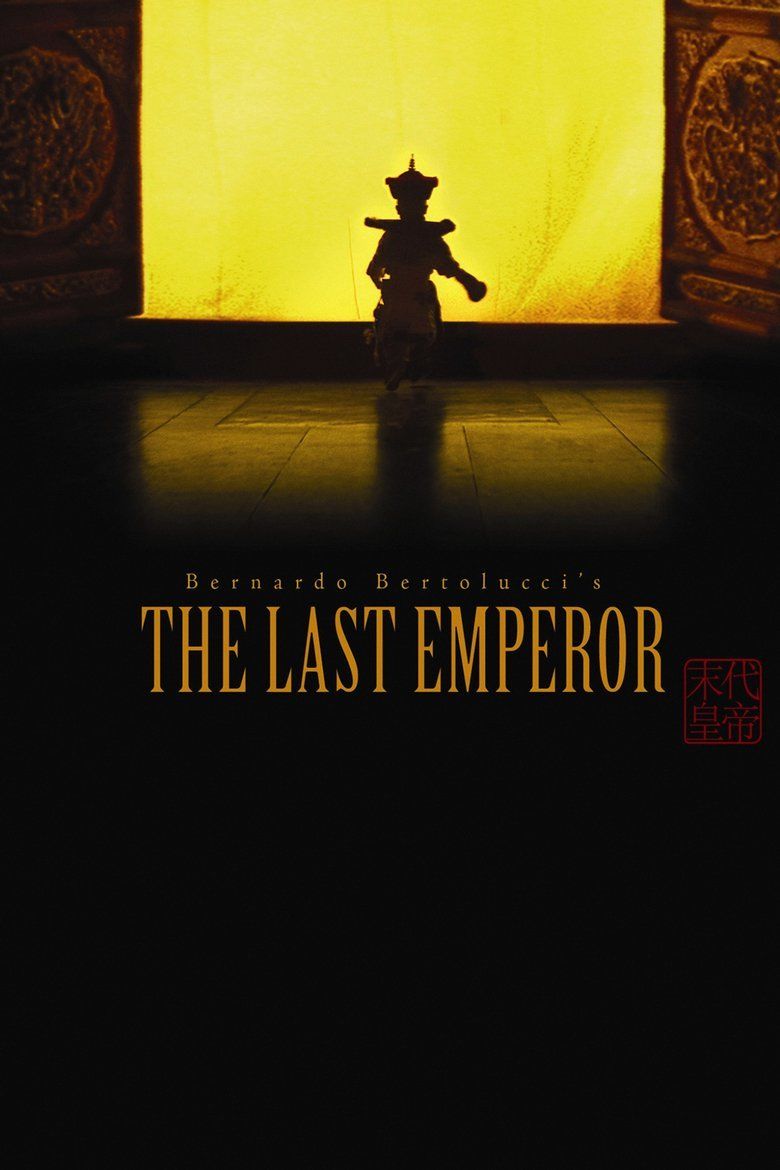 | ||||||||||||||||||||||||||||||||||
Language EnglishMandarin Chinese Release date 23 October 1987 (1987-10-23) (Italy)18 November 1987 (1987-11-18) (New York City, New York Premiere)19 November 1987 (1987-11-19) (Los Angeles, California Premiere)18 December 1987 (1987-12-18) (USA) Writer Mark Peploe (screenplay), Bernardo Bertolucci (screenplay), Enzo Ungari (initial screenplay collaboration) Cast (Pu Yi), Peter O'Toole (Reginal Flemming Johnson), (Wang Jung), (Big Li), (Amakasu), Ruocheng Ying (Governor)Similar movies The Last Samurai , Spring, Summer, Fall, Winter... and Spring , 1408 , To Kill a Mockingbird , Magnolia , Kundun Tagline He was the Lord of Ten Thousand Years, the absolute monarch of China. He was born to rule a world of ancient tradition. Nothing prepared him for our world of change. | ||||||||||||||||||||||||||||||||||
The last emperor 1987 trailer
The Last Emperor (Italian: L'ultimo imperatore) is a 1987 British-Italian epic biographical film about the life of Puyi, the last Emperor of China, whose autobiography was the basis for the screenplay written by Mark Peploe and Bernardo Bertolucci. Independently produced by Jeremy Thomas, it was directed by Bertolucci and released in 1987 by Columbia Pictures. Puyi's life is depicted from his ascent to the throne as a small boy to his imprisonment and political rehabilitation by the Communist Party of China.
Contents
- The last emperor 1987 trailer
- The last emperor 1987 john lone joan chen peter o toole
- Plot
- Development
- Filming
- Soundtrack
- Release
- Critical response
- Awards
- Historical omissions
- Alternate versions
- References
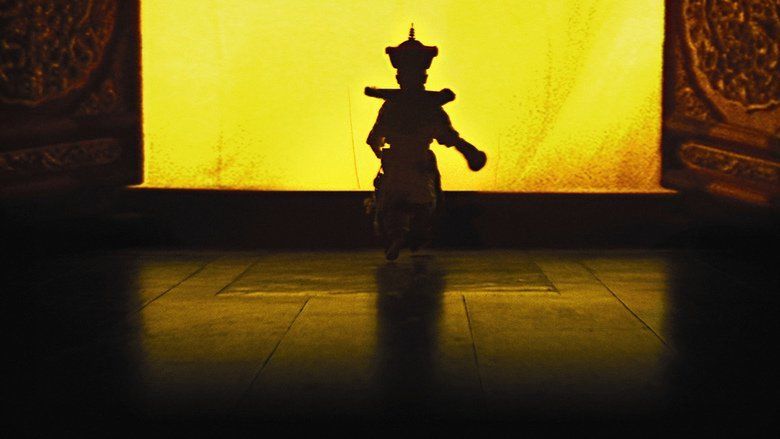
The film stars John Lone as Puyi, with Joan Chen, Peter O'Toole, Ruocheng Ying, Victor Wong, Dennis Dun, Ryuichi Sakamoto, Maggie Han, Ric Young, Vivian Wu, and Chen Kaige. It was the first Western feature film authorized by the People's Republic of China to film in the Forbidden City in Beijing. It won nine Academy Awards, including Best Picture and Best Director.
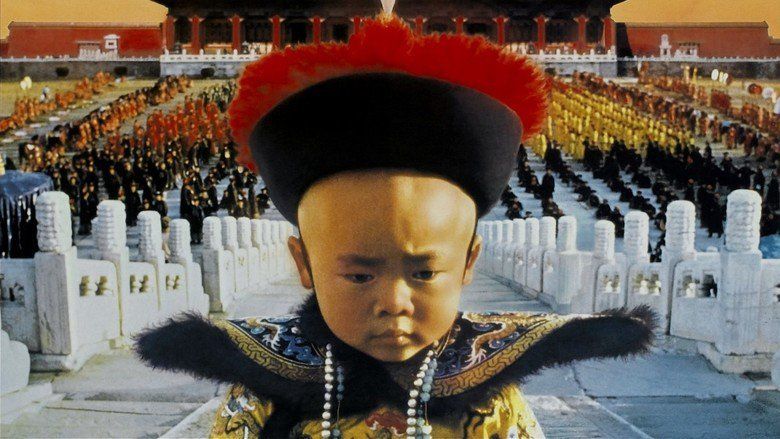
The last emperor 1987 john lone joan chen peter o toole
Plot
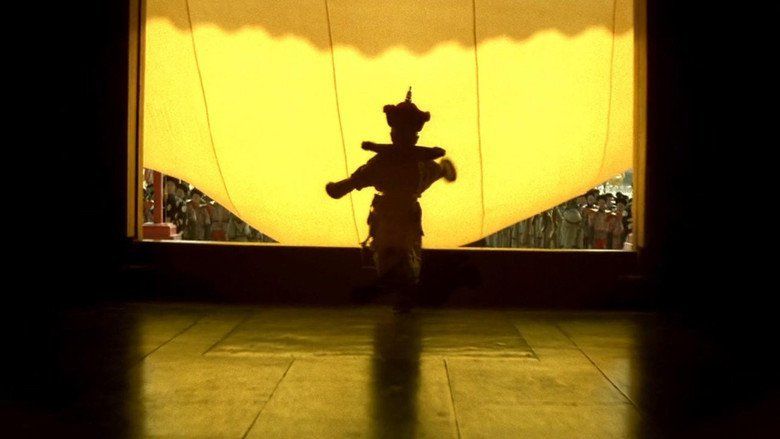
In 1950, Puyi has been kept in custody for five years, since the Red Army captured him during the Soviet Union entry into the Pacific War in 1945. In the recently established People's Republic of China, Puyi arrives as a political prisoner and war criminal at the Fushun Prison. Soon after his arrival, Puyi attempts suicide, but is quickly revived and told he must stand trial.
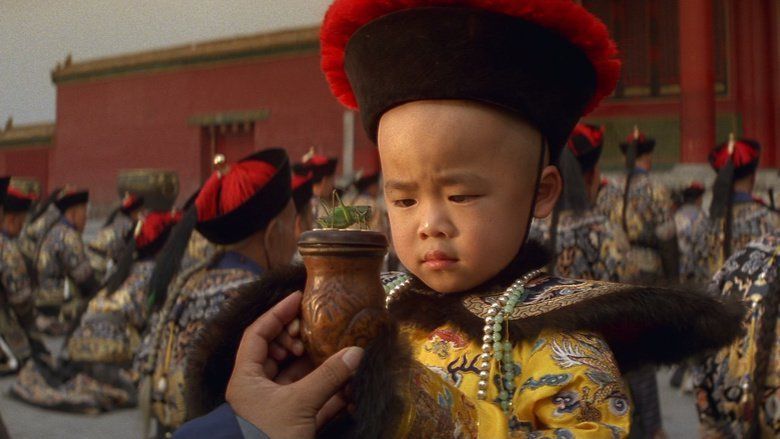
42 years earlier, in 1908, Puyi is summoned to the Forbidden City by the dying Empress Dowager Cixi. After telling him that the previous emperor had died earlier that day, with her last words, Cixi tells Puyi that he will be the next emperor. After his coronation, Puyi, frightened by his new surroundings, repeatedly expresses his wish to go home, which is denied him. Despite having scores of palace eunuchs and maids to wait on him, his only real friend is his wet nurse, who accompanied him and his father to the palace on the Empress Dowager's summons.
The next section of the film continues the series of chronological flashbacks showing Puyi's early life: from his imperial upbringing in the Forbidden City with his younger brother, Pujie, during the Republican era, his tutelage under the kindly Scotsman Reginald Johnston, his marriage to Wanrong, and his increasing rebellion against traditional court practices, to his subsequent exile in Tientsin following the Beijing Coup, his Japanese-supported puppet reign of Manchukuo, and then his capture by the Red Army – all intermixed with flash-forwards portraying his prison life in the 1950s.
Under the "Communist re-education programme" for political prisoners, Puyi is coerced by his interrogators to formally renounce his forced collaboration with the Japanese invaders for war crimes during the Second Sino-Japanese War. Finally, after a heated discussion with the camp commandant and upon watching a film detailing the wartime atrocities committed by the Japanese, Puyi recants his previous stance and is considered rehabilitated by the government; he is subsequently set free in 1959.
The final minutes of the film show a flash-forward to 1967 during the rise of Mao Zedong's cult of personality and the beginning of the Cultural Revolution. By now, Puyi has become a simple gardener who lives a peasant proletarian existence. On his way home from work, he happens upon a Red Guard parade, complete with children playing pentatonic music on accordions en masse and dancers who dance the rejection of landlordism by the Communists. His prison camp commander, who helped him greatly during his rehabilitation, is forced to wear a dunce cap and a sandwich board bearing punitive slogans, and is one of the political prisoners now punished as an anti-revolutionary in the parade.
Puyi later visits the Forbidden City as an ordinary tourist. He meets an assertive little boy wearing the red scarf of the Pioneer Movement. The young Communist orders Puyi to step away from the throne. However, Puyi proves to the boy that he was indeed the Son of Heaven, proceeding to approach the throne. Behind it, Puyi finds a 60-year-old pet cricket that he was given by an elderly Mandarin on his coronation day and gives it to the child. Amazed by the gift, the boy turns to talk to Puyi, but the emperor has disappeared.
In 1987, a tour guide is leading a group through the palace. Stopping in front of the throne, the guide sums up Puyi's life in a few, brief sentences, concluding that he died in 1967.
Development
Bernardo Bertolucci proposed the film to the Chinese government as one of two possible projects - the other was an adaptation of La Condition Humaine (Man's Fate) by André Malraux. The Chinese preferred The Last Emperor. Producer Jeremy Thomas managed to raise the $25 million budget for his ambitious independent production single-handedly. At one stage, he scoured the phone book for potential financiers. Bertolucci was given complete freedom by the authorities to shoot in The Forbidden City, which had never before been opened up for use in a Western film. For the first ninety minutes of the film, Bertolucci and Storaro made full use of its visual splendour.
Filming
19,000 extras were needed over the course of the film. The Chinese army was drafted in to accommodate.
Soundtrack
While not included on the album soundtrack, the following music was played in the film: "Am I Blue?" (1929), "Auld Lang Syne" (uncredited), and "China Boy" (1922) (uncredited).
Release
The film was originally released by Columbia Pictures, although they were initially reluctant, and producer Thomas had to raise a large sum of the budget independently. Only after shooting was completed did the head of Columbia agree to distribute The Last Emperor in North America. Columbia later lost the rights when it reached home video through Nelson Entertainment, which released the film on VHS and Laserdisc. The film also received a Laserdisc release in Australia in 1992, through Columbia Tri-Star Video. Years later, Artisan Entertainment acquired the rights to the film and released both the theatrical and extended versions on home video. In February 2008 The Criterion Collection (under license from now-rights-holder Thomas) released a four disc Director-Approved edition, again containing both theatrical and extended versions. Criterion released a Blu-ray version on 6 January 2009.
The Last Emperor had an unusual run in theatres. It did not enter the weekend box office top 10 until its twelfth week in which the film reached #7 after increasing its gross by 168% from the previous week and more than tripling its theatre count (this was the weekend before it was nominated for the Academy Award for Best Picture). Following that week, the film lingered around the top 10 for 8 weeks before peaking at #4 in its 22nd week (the weekend after winning the Oscar) (increasing its weekend gross by 306% and nearly doubling its theatre count from 460 to 877) and spending 6 more weeks in the weekend box office top 10. Were it not for this late push, The Last Emperor would have joined The English Patient, Amadeus, and The Hurt Locker as the only Best Picture winners to not enter the weekend box office top 5 since these numbers were first recorded in 1982.
The film was converted into 3D and shown in the Cannes Classics section at the 2013 Cannes Film Festival.
Critical response
The film received critical acclaim. On Rotten Tomatoes, it has a 92% "Certified Fresh" score based on 59 reviews, with an average rating of 8.1/10. The site's consensus states: "While decidedly imperfect, Bernardo Bertolucci's epic is still a feast for the eyes." Metacritic reports a 76 out of 100 rating based on 15 critics, indicating "generally favorable reviews".
Awards
At the 60th Academy Awards, the film won all nine Oscars for which it was nominated:
Historical omissions
In Japan, the Shochiku Fuji Company edited out a thirty-second sequence from The Last Emperor depicting the Rape of Nanjing before distributing it to Japanese theatres, without Bertolucci's consent. The Rape of Nanjing — in which hundreds of thousands of Chinese civilians were massacred by the Imperial Japanese Army — is an event disputed by some Japanese, and a diplomatic stumbling block with China. Bertolucci was furious at Shochiku Fuji's interference with his film, calling it "revolting". The company quickly restored the scene, blaming "confusion and misunderstanding" for the edit while opining that the Rape sequence was "too sensational" for Japanese audiences.
Jeremy Thomas recalled the approval process for the screenplay with the Chinese government: "It was less difficult than working with the studio system. They made script notes and made references to change some of the names, then the stamp went on and the door opened and we came."
Alternate versions
The film's theatrical release ran 160 minutes. Deemed too long to show in a single three-hour block on television but too short to spread out over two nights, an extended version was created which runs 218 minutes. Cinematographer Vittorio Storaro and director Bernardo Bertolucci have confirmed that this extended version was indeed created as a television mini-series and does not represent a "director's cut". The television cut includes more footage from the stifling palace of Manchukuo. An entire character cut from the theatrical release is the drug-addled opium pusher appointed Minister of Defence by the Japanese, who becomes a sort of demon when he surfaces in Pǔyí's prison camp, whispering the awful truth to Puyi at night. In addition, the extra footage shows more detail about the way in which Pǔyí was unable to take care of his own needs without servants. Both are currently available on DVD.
The Criterion Collection 2008 version of 4 DVDs adds commentary by Ian Buruma, composer David Byrne, and the Director's interview with Jeremy Isaacs (ASIN: B000ZM1MIW, ISBN 978-1-60465-014-3). It includes a booklet featuring an essay by David Thomson, interviews with production designer Ferdinando Scarfiotti and actor Ying Ruocheng, a reminiscence by Bertolucci, and an essay and production-diary extracts from Fabien S. Gerard.
References
The Last Emperor WikipediaThe Last Emperor IMDbThe Last Emperor Roger EbertThe Last Emperor Rotten TomatoesThe Last Emperor Amazon.comThe Last Emperor themoviedb.org
